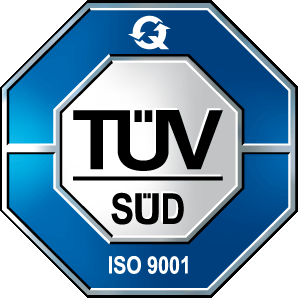In the previous text in the series devoted to comparing the “commandments” contained in the new editions of the PRINCE2® manual and PMBOK® Guide published in 2017, I started discussing the implementation of the project. I summarized that article by saying that the “Lead and manage project work” process in accordance with PMBOK® Guide does not exhaust all the tasks of the project manager and team leader performed during the implementation of project work in accordance with the PRINCE2® methodology. It is therefore necessary to indicate further processes originating from PMBOK® Guide and compare them with elements of the PRINCE2® methodology.
The word “change” appeared several times in the previous text. This is why I decided to first work on the “Perform Integrated Change Control” process.. This is the process of reviewing all change requests, approving and managing changes to products, project documents and the project management plan, and communicating decisions. A key benefit of using this process is that changes can be considered in an integrated way, taking into account the overall project risk that may arise from making changes without considering their impact on project goals or plans.
From the moment the baseline plan is approved (scope baseline, schedule baseline, cost baseline), this process should be carried out throughout the duration of the project in relation to these basic elements of the project management plan. Depending on the level of complexity of the project and its specific conditions, the integrated change control process may also include other elements that should be indicated in the configuration management plan. Detailed rules for dealing with change requests are to be included in the change management plan.
The change management plan will also specify the division of responsibilities. The “Perform Integrated Change Control” process itself is in accordance with PMBOK® Guide primary responsibility project manager. The project manager will always be responsible for recording a change request submitted by any stakeholder, even if it was submitted verbally. It is obvious, however, that the project manager will not always make the final decision. The change management plan should indicate when the decision can be made by the project manager, when by the sponsor, and when a formal change control board will be required.
In accordance with the PRINCE2® methodology, activities related to capturing and assessing requests for changes are carried out by the project manager as part of the “Controlling a stage” process. It is to operate in accordance with the rules of conduct specified in the project initiation documentation, i.e. in the change control approach. This document exhausts both the elements of the configuration management plan and the change management plan proposed by PMBOK® Guide.
In terms of roles and responsibilities, it will specify the tasks and responsibilities of the project manager and the role of change authority. This role may be performed by a designated person or persons, but may also be combined with the role of project manager, project supervision or left entirely in the hands of the project board. The PRINCE2® methodology also clearly indicates that it will depend on adaptation to the specificity and complexity of the project.
The general approach to changes in the project in the PRINCE2® methodology is included in the topic “change”. In addition to elements related to configuration management and the division of roles and responsibilities, it contains the recommended issue and change control procedure. It includes the following steps: capture, assess, propose, decide and implement. As we already know, the “decide” step may exceed the project manager’s authority. Interestingly, both the PRINCE2® methodology and PMBOK® Guide provide that the person competent to make the decision may either agree to the change, reject it or postpone the decision.
However, Manual PRINCE2® clearly assigns the remaining steps of the recommended procedure to the project manager. The project manager will use the issue register for this purpose. PMBOK® Guide proposed a tool with a similar name as an output object from the “Direct and manage project work” process, i.e. “issue log” also translated into Polish as an issue register. However, the “Perform Integrated Change Control” process also includes an output object called “change log”. Explaining further similarities and differences between these documents will be the subject of my next text.
Author: Maciej Krupa
Previous entries in the series:
- PMBOK® Guide vs manual PRINCE2® – Project integration management part 5
- PMBOK® Guide vs manual PRINCE2® – Project integration management part 4
- PMBOK® Guide vs manual PRINCE2® – Project integration management part 3
- PMBOK® Guide vs manual PRINCE2® – Project integration management part 2
- PMBOK® Guide vs manual PRINCE2® – Project integration management part 1
- Project life cycle – PMBOK® Guide vs manual PRINCE2®









